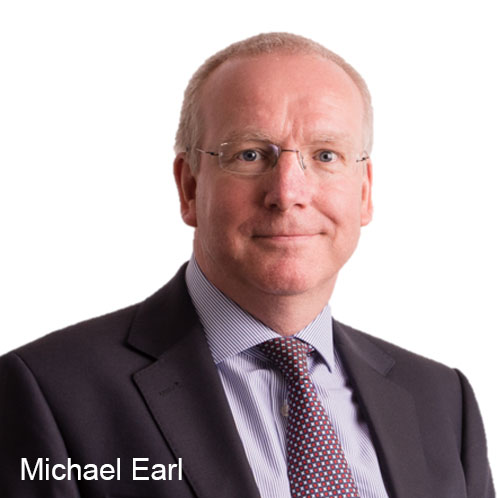Several factors have led to an increase in demand for disposable autoinjectors in recent years. The average age of the population continues to grow rapidly around the world, with projections that one in six people will be older than 60 by 2030.1
This ageing demographic, increasingly suffering from chronic diseases, has led to a rising uptake of subcutaneous injections as a preferred route of administration for conditions such rheumatoid arthritis, Crohn’s and multiple sclerosis.
Meanwhile, the COVID-19 pandemic has accelerated the shift towards remote patient treatment and monitoring.
This combination of factors makes it even more crucial to develop user-friendly drug delivery devices such as autoinjectors that can be used successfully in a home environment or outside of the hospital setting — without the supervision of healthcare specialists — and by a broad range of users with different needs and abilities.
Combining expertise
To cater to changing needs and meet growing demand during the coming years, Owen Mumford Pharmaceutical Services (OMPS) looked to collaborate on its innovative disposable Aidaptus autoinjector and thereby reduce the risk of supply chain disruption for its pharma partners.

To that end, the company combined its expertise with Stevanato Group, who became an exclusive manufacturing partner for the Aidaptus autoinjector in May 2022, which also allowed OMPS to expand the reach of Aidaptus.2
The OMPS team also now benefits from Stevanato Group’s advanced capabilities in component moulding, subassembly and final assembly equipment for the autoinjector. Working together, OMPS and Stevanato Group are committed to producing a high-quality product that will benefit both pharmaceutical companies and patients.
Building Aidaptus: an autoinjector journey
OMPS designed and brought the first ever autoinjector — Autoject 1 — to market in the mid-1980s. Since then, the company has created both reusable and disposable autoinjectors for many pharmaceutical companies. Its extensive market knowledge was invaluable when it came to designing Aidaptus as a true platform autoinjector with unique features.
Design verification testing for Aidaptus confirmed its ability to work with a variety of formulations, needle sizes and primary containers to provide pharma companies with maximum levels of flexibility.
Aidaptus can incorporate both 1 mL and 2.25 mL syringes in the same compact base device. It can also adapt to different fill volumes using its patented autoadjust plunger technology, which automatically adjusts to different plunger positions and fill volumes without the need for any change parts.
Therefore, the same device can be used irrespective of any formulation changes that may take place during drug development or as part of lifecycle management.
A true platform product
The benefits for patients are also multifaceted. During development and throughout human factor studies, OMPS engaged with a wide range of intended patient groups — including those in different age brackets as well as those suffering from physical or cognitive impairments.
The intended users of Aidaptus may suffer from a range of chronic diseases, including rheumatoid arthritis and multiple sclerosis, which can make the physical act of injection especially difficult if their needs are not acknowledged in the design and testing phase.
The final Aidaptus design is a simple and intuitive device with clear visual and audible end of dosage indicators, all while remaining compact in size and easy to handle. As a result, the device can be used for self-administration by a variety of patient types from the comfort of their own homes.

Facilitating self-administration reduces the need for appointments with healthcare professionals, freeing up valuable hospital time and reducing the burden on healthcare services.
Scaling-up production
The collaboration between Stevanato Group and Owen Mumford Pharmaceutical Services means that Stevanato Group will be the exclusive contract manufacturer for Aidaptus, bringing a wealth of expertise to both the production and commercialisation phases.
The business will use its vast experience in industrialisation to ensure device supply through robust and scalable manufacturing processes. Specifically, during the first phase of production, Stevanato Group will provide precision plastic injection moulding services for Aidaptus components alongside subassembly services, using equipment designed by the in-house automation team.
The subassembly equipment will be installed at both Stevanato Group and Owen Mumford Pharmaceutical Services sites for dual sourcing options. Final assembly equipment — ranging from benchtop units to high-volume production — can also be provided according to individual customer needs.
From a commercial standpoint, Stevanato Group’s global footprint will ramp up OMPS’ sales and marketing efforts, helping to identify more customers who have a need for such a device. Commercial teams from both companies are working jointly to develop new customers and support existing ones.
Moreover, with sites in Europe and in the US, Stevanato Group can also offer analytical services, especially in relation to drug containment solutions.
Increasing capacity
This strategic partnership brings both partners multiple benefits and, ultimately, the collaboration will reduce time-to-market, minimise supply chain risk and simplify final assembly for pharmaceutical companies, allowing them to get their combination product to market as rapidly as possible.
Together, Owen Mumford Pharmaceutical Services and Stevanato Group will provide an end-to-end solution for customers.
At this early stage of the partnership, both companies are making investments to build capacity quickly to prepare for an influx of demand, planning to have capacity for several hundred thousand units in 2023 and building to several million by 2024.
OMPS will install new equipment at the new state-of-the-art facility in Witney, UK, which is due for completion in 2023.
The site has been designed in accordance with BREEAM certification environmental standards, employing sustainable construction, operation and design to ensure it fits with the company’s sustainability objectives — including a goal for net zero carbon emissions by 2045.
References
- www.who.int/news-room/fact-sheets/detail/ageing-and-health#:~:text=By%202050%2C%20the%20world's%20population,2050%20to%20reach%20426%20million.
- www.stevanatogroup.com/en/.

